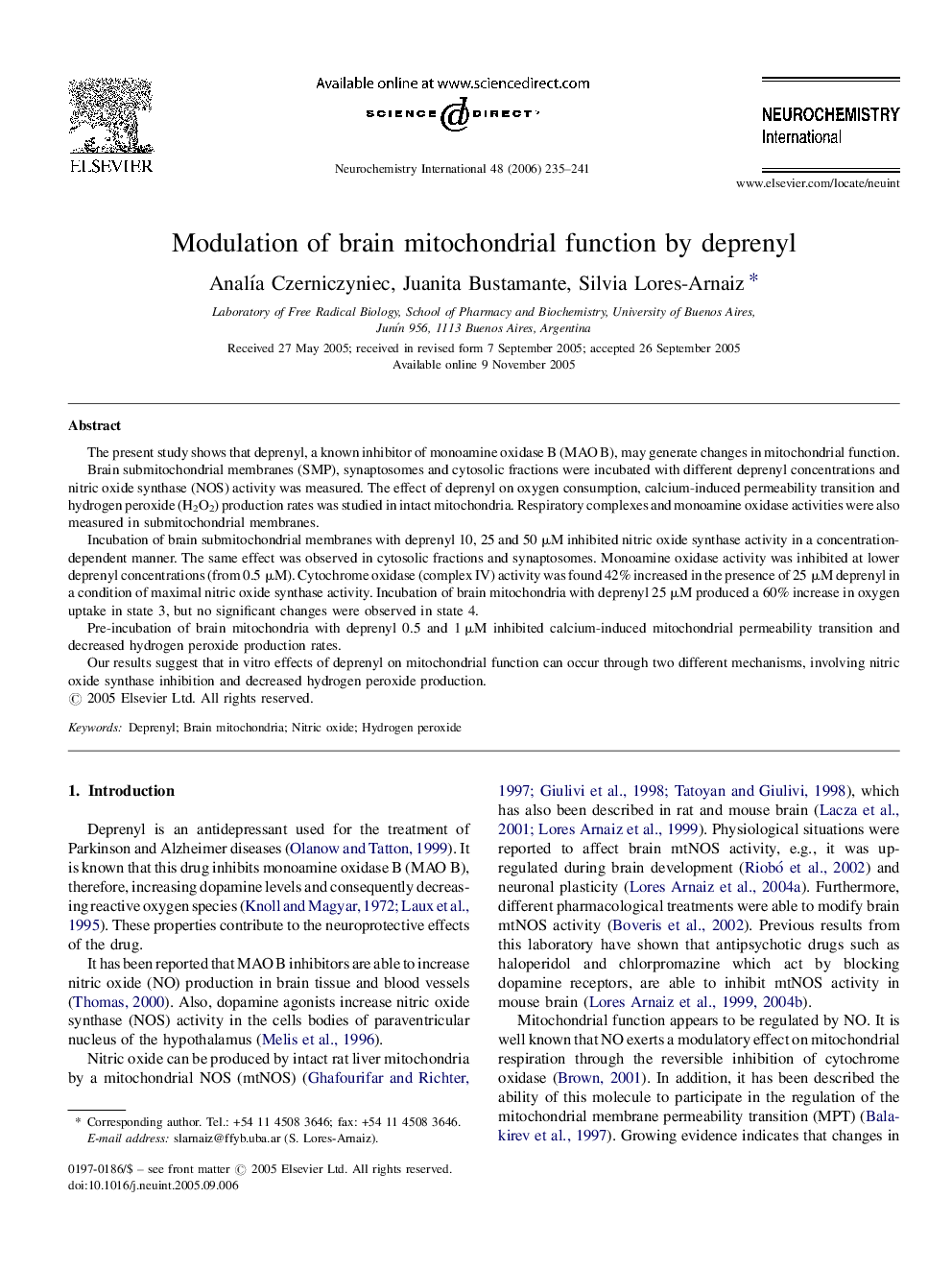| Article ID | Journal | Published Year | Pages | File Type |
|---|---|---|---|---|
| 2202111 | Neurochemistry International | 2006 | 7 Pages |
The present study shows that deprenyl, a known inhibitor of monoamine oxidase B (MAO B), may generate changes in mitochondrial function.Brain submitochondrial membranes (SMP), synaptosomes and cytosolic fractions were incubated with different deprenyl concentrations and nitric oxide synthase (NOS) activity was measured. The effect of deprenyl on oxygen consumption, calcium-induced permeability transition and hydrogen peroxide (H2O2) production rates was studied in intact mitochondria. Respiratory complexes and monoamine oxidase activities were also measured in submitochondrial membranes.Incubation of brain submitochondrial membranes with deprenyl 10, 25 and 50 μM inhibited nitric oxide synthase activity in a concentration-dependent manner. The same effect was observed in cytosolic fractions and synaptosomes. Monoamine oxidase activity was inhibited at lower deprenyl concentrations (from 0.5 μM). Cytochrome oxidase (complex IV) activity was found 42% increased in the presence of 25 μM deprenyl in a condition of maximal nitric oxide synthase activity. Incubation of brain mitochondria with deprenyl 25 μM produced a 60% increase in oxygen uptake in state 3, but no significant changes were observed in state 4.Pre-incubation of brain mitochondria with deprenyl 0.5 and 1 μM inhibited calcium-induced mitochondrial permeability transition and decreased hydrogen peroxide production rates.Our results suggest that in vitro effects of deprenyl on mitochondrial function can occur through two different mechanisms, involving nitric oxide synthase inhibition and decreased hydrogen peroxide production.
